Exploring Future Warfare: Insights from a NASA Scientist
Written on
Chapter 1: Introduction to Future Warfare
I recently came across a compelling PowerPoint presentation by a leading NASA scientist that delves into the future of warfare, particularly focusing on technological advancements expected by 2025. Although the exact date of its creation is ambiguous, some sources suggest it was published in 2011, with indications on one of the slides pointing to as early as 2001. The author, Dennis Bushnell, is known for his unconventional thinking, which piqued my interest. It remains uncertain whether this work represents his personal views or official NASA material, though it prominently features the NASA logo. Given that the presentation spans 113 slides, I'll highlight the most intriguing points.
The presentation begins by asserting that the potential to generate wealth is only limited by our capacity for innovation, while identifying politics, religion, megalomania, and territorial conflicts as the main drivers of warfare.

Chapter 2: Educational Innovations
Before delving into the militarization of technology, the presentation emphasizes the role of web-based education in fostering equality, encouraging innovation, stabilizing populations, and accelerating the spread of technology. This concept resonates with me, as I often envisioned a more efficient classroom experience through online learning during my high school years. It perplexes me that investors in Silicon Valley opted to fund social media platforms like Facebook and Twitter instead of pursuing educational technologies.
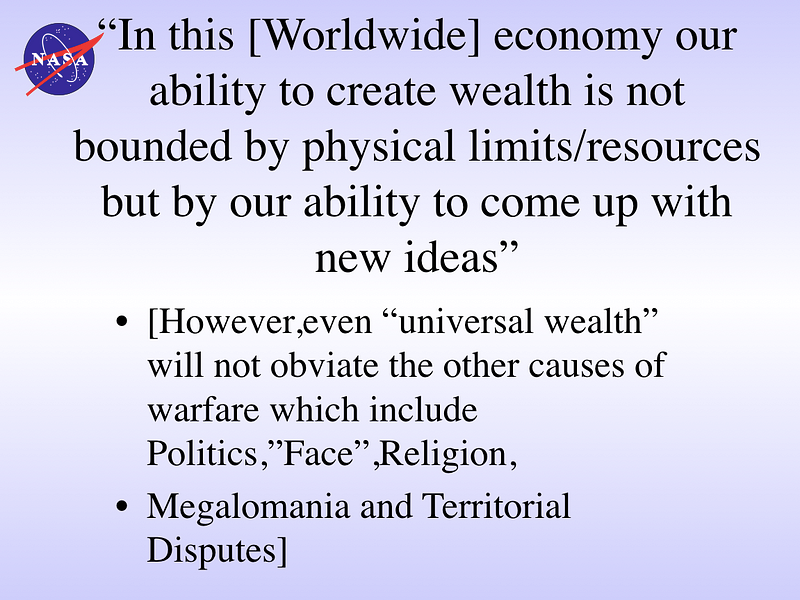
Chapter 3: Emerging Technologies in Warfare
A slide labeled “Givens” (Now-to-“Soon”) discusses the future of ubiquitous sensor technologies across land, sea, air, and space, along with the advancement of robotic swarm technologies. This is particularly relevant given recent reports of alleged robotic swarms in UAP sightings. There is growing public discourse around developing comprehensive sensor and fusion capabilities for investigating UAP phenomena.
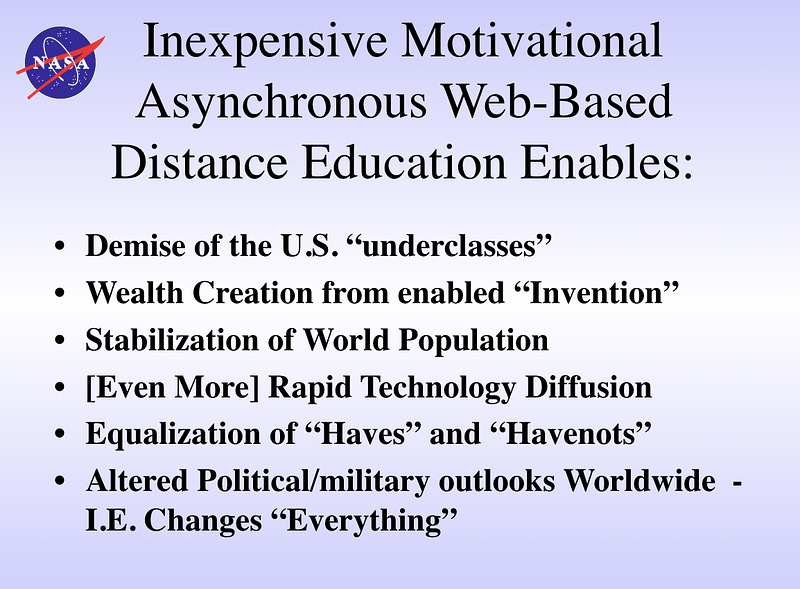
Section 3.1: Covert Operations and Biological Agents
One slide introduces the concept of “co-opted insects,” suggesting the potential for embedding technology in insects for covert reconnaissance. Interestingly, I have observed something resembling this in practice. The notion of being "bugged" in the 21st century may take on entirely new dimensions.

Section 3.2: Advanced Camouflage and Weapons
Another slide addresses advanced camouflage techniques and spoofing technologies. This aligns with discussions surrounding UAPs, including the development of sophisticated cloaking technologies and beam weapons.
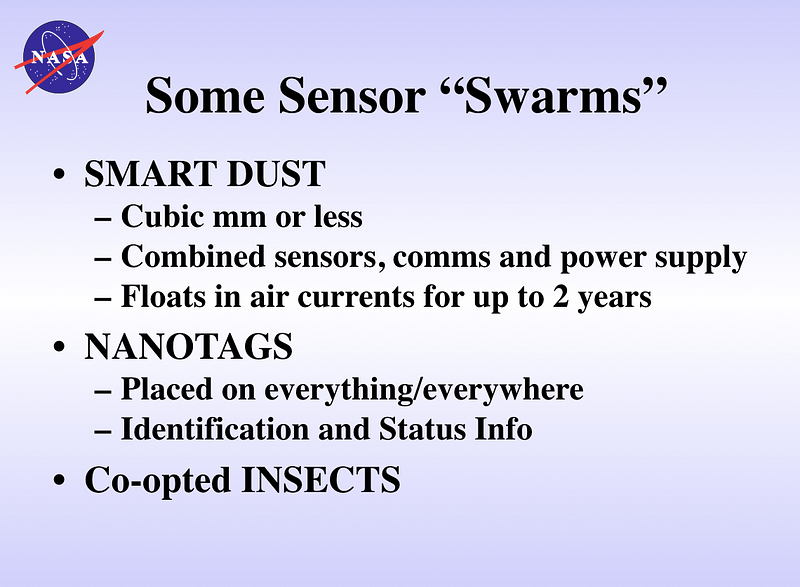
Chapter 4: Bioweapons and Warfare Tactics
A more somber slide speculates on the potential use of bioweapons, especially in the post-COVID context. The idea of a “long-term/fingerprintless campaign” strikes me as particularly prescient, highlighting the ongoing relevance of such tactics.
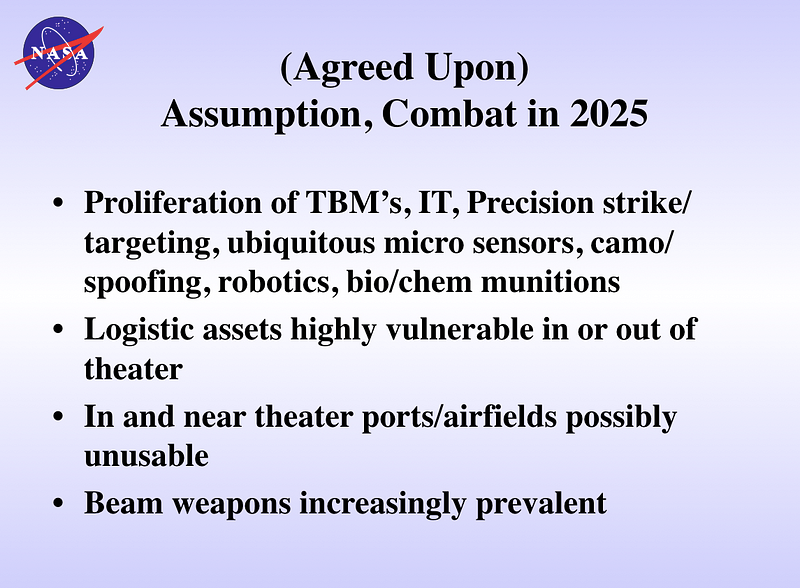
Section 4.1: Understanding New Threats
The slides provide insights into the timeline for emerging technologies, notably including artificial life and its implications.
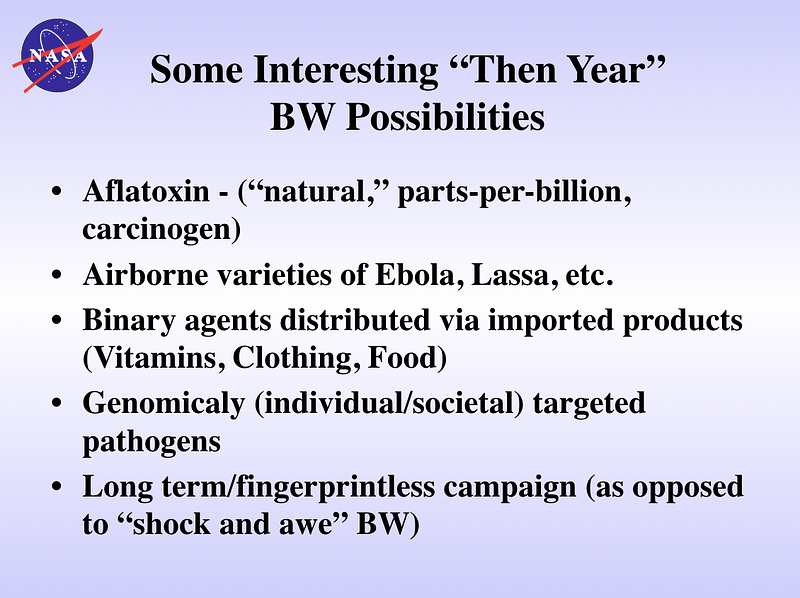
Chapter 5: The Havana Syndrome
Remember Havana Syndrome? This mysterious ailment impacted mainly U.S. intelligence personnel and was initially dismissed as “mass hysteria.” Recent investigations have brought to light the possibility of microwave weaponry being involved, despite skepticism about such technologies existing.

Section 5.1: Psychological Warfare
The presentation also touches on psychological warfare tactics. Interestingly, this topic has surfaced in discussions about UAPs, highlighting the interconnectedness of these subjects.
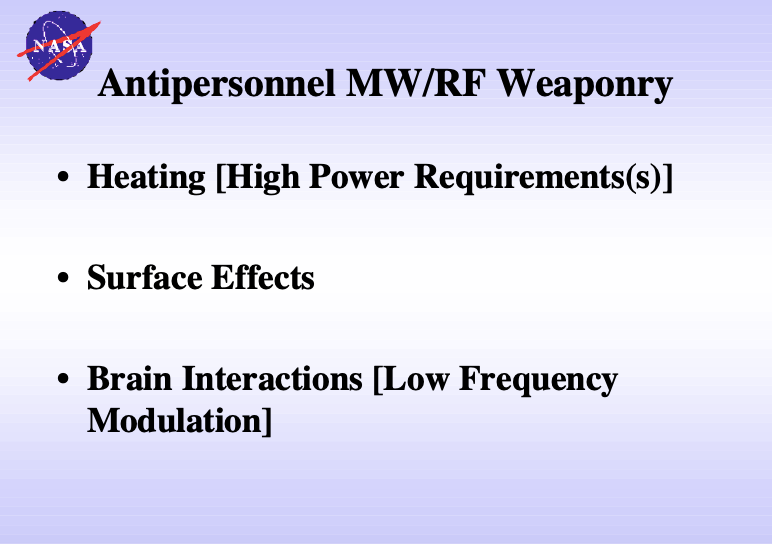
Chapter 6: Vulnerabilities and Future Implications
The slides highlight vulnerabilities within the U.S., particularly concerning biowarfare and information technology warfare. The concept of “CNN syndrome” suggests the potential for adversaries to exploit media focus on casualties as a strategic advantage. This foresight seems almost prophetic, given the supply chain challenges revealed by the COVID-19 pandemic.

Section 6.1: Underwater Threats and Advanced Technologies
The discussion also alludes to underwater threats, linking back to recent congressional hearings on UAPs, where Unidentified Submerged Objects (USOs) were mentioned.
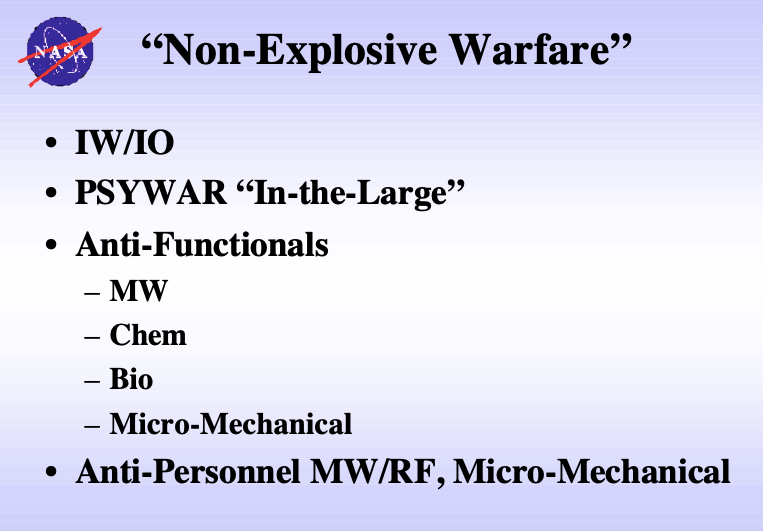
Chapter 7: The Intersection of Humanity and Technology
One particularly intriguing slide posits that it will soon be feasible to connect human brain cells with silicon chips, a notion that has emerged in UAP discussions as well, particularly regarding cognitive interfaces.
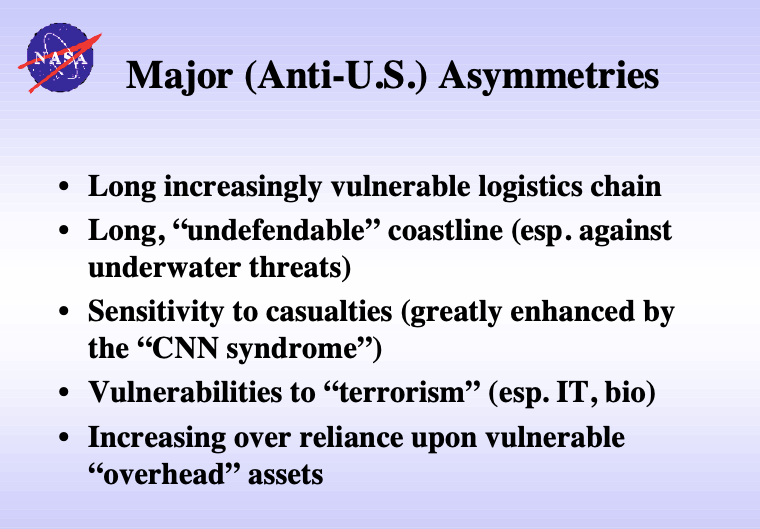
In conclusion, while this presentation contains much more material worth exploring, I've focused on the slides that resonated with me the most. For those interested in reviewing the entire presentation, it is available for download through the provided link.
If you appreciate my insights, consider following me on Medium. You don’t need an account to read my articles, but if you do decide to join, please use the link below.